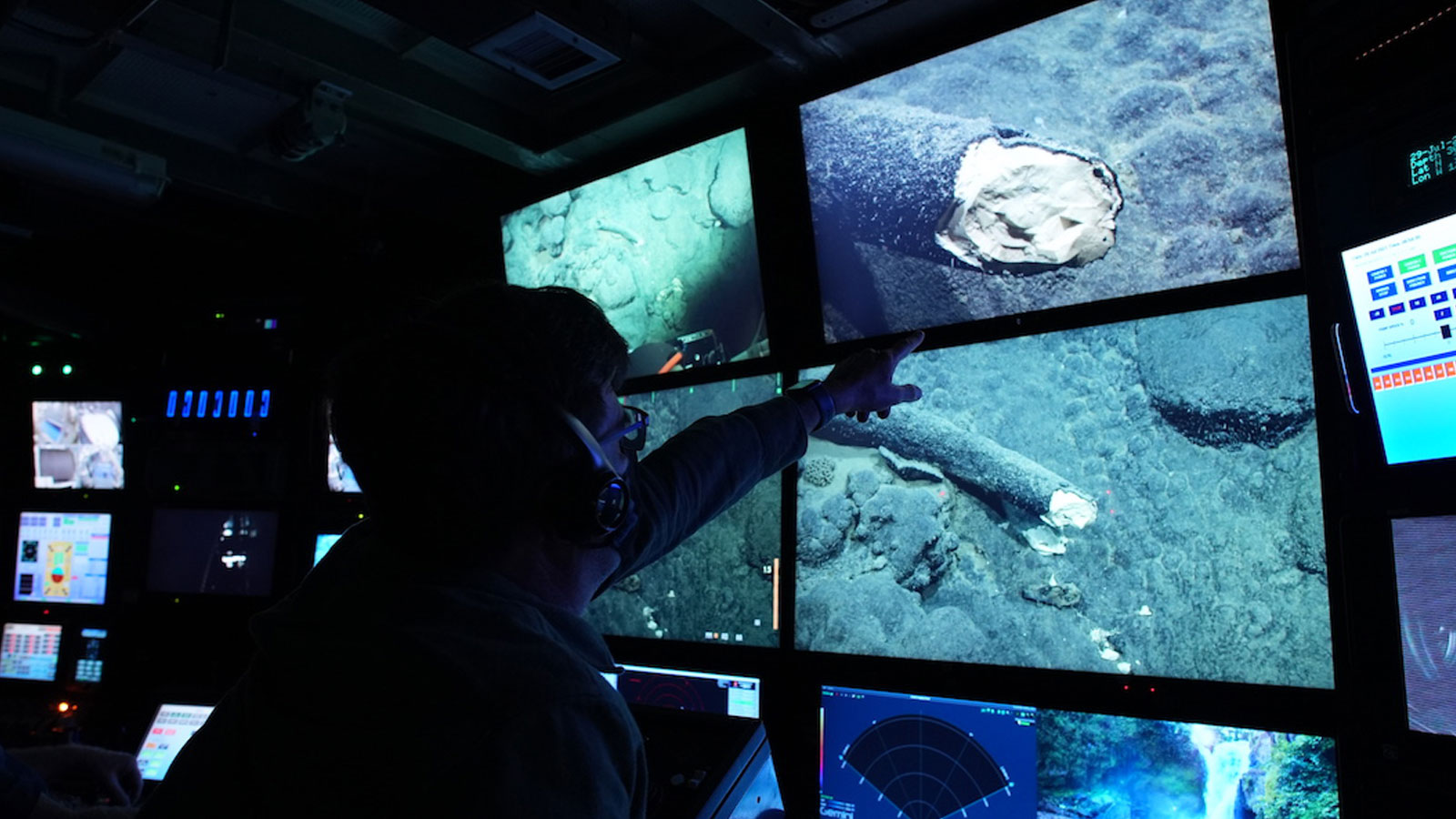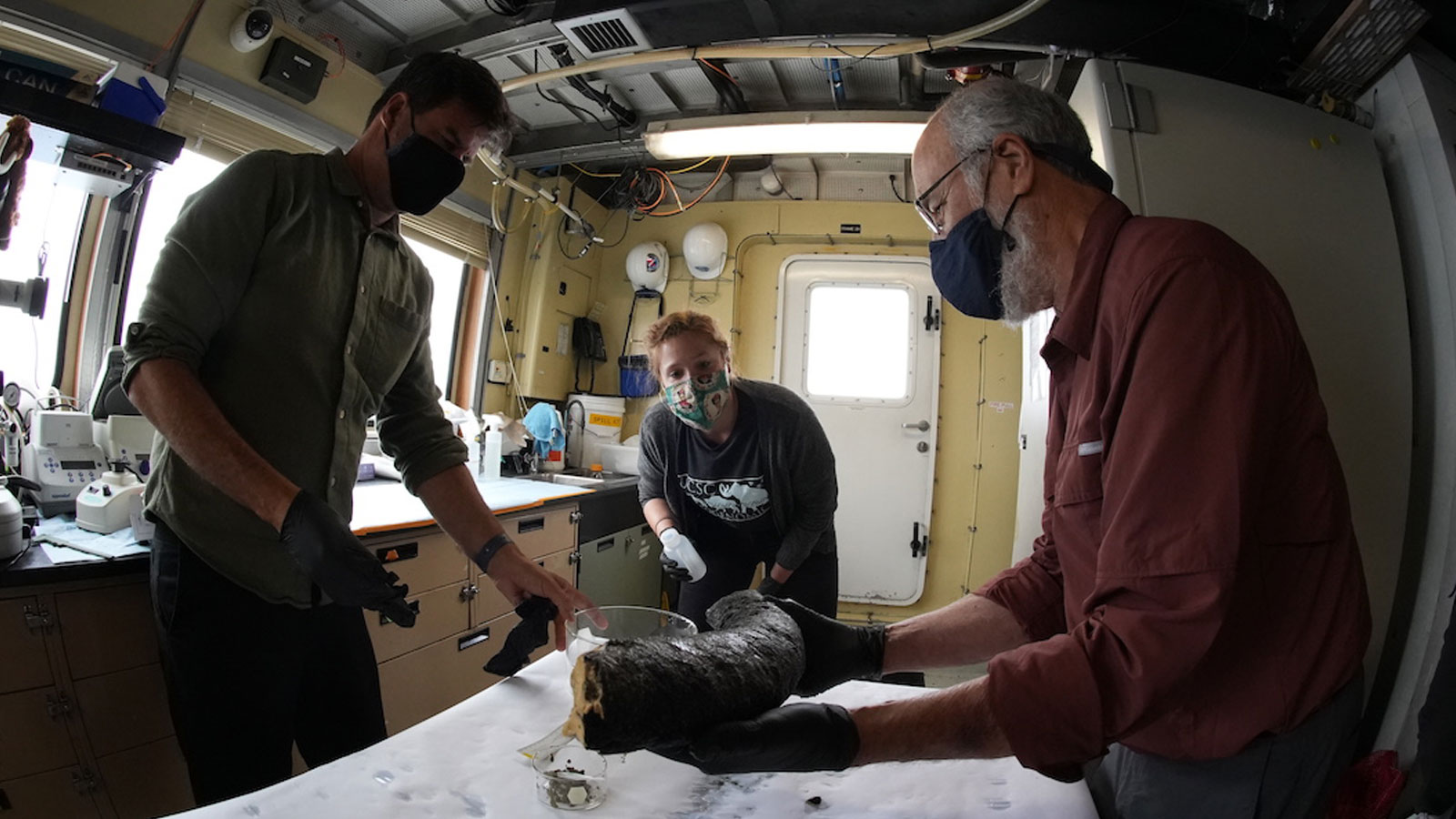UM Assists California Researchers After Recovering Mammoth Tusk From The Bottom Of The Ocean
(CNN) - Mammoths are long to be known as ancient land dwellers, so scientists were shocked to find remains from the animal at the bottom of the ocean.
Pilot Randy Prickett and scientist Steven Haddock, researchers with Monterey Bay Aquarium Research Institute (MBARI), discovered a Columbian mammoth tusk 185 miles offshore and 10,000 feet deep in the ocean in 2019, the institution said in a news release.
 MBARI Senior Scientist Steven Haddock and the science team observe the internal structure of the tusk.
MBARI Senior Scientist Steven Haddock and the science team observe the internal structure of the tusk.
Credit: Darrin Schultz/MBARI
At the time they were only able to collect a small piece of the tusk, so they returned in July 2021 to get the complete sample.
"You start to 'expect the unexpected' when exploring the deep sea, but I'm still stunned that we came upon the ancient tusk of a mammoth," said Haddock. "Our work examining this exciting discovery is just beginning and we look forward to sharing more information in the future."
University of Michigan paleontologist Daniel Fisher, who specializes in the study of mammoths and mastodons, said it is unlike anything he has ever seen.
 MBARI Senior Scientist Steven Haddock (left), UC Santa Cruz postdoctoral researcher Katie Moon (center), and University of Michigan paleontologist Daniel Fisher (right) prepare to clean the large tusk piece in the ship's laboratory. Credit: Darrin Schultz/MBARI
MBARI Senior Scientist Steven Haddock (left), UC Santa Cruz postdoctoral researcher Katie Moon (center), and University of Michigan paleontologist Daniel Fisher (right) prepare to clean the large tusk piece in the ship's laboratory. Credit: Darrin Schultz/MBARI
"Other mammoths have been retrieved from the ocean, but generally not from depths of more than a few tens of meters," Fisher said.
A variety of research facilities are examining the tusk to determine a variety of information about it including the age of the animal at its death, the release said. The researchers said the cold, high pressure environment helped to preserve the tusk, so it can be studied in greater detail.
The scientists believe it could be the oldest well-preserved mammoth tusk recovered from this region of North America, and the UCSC Geochronology Lab estimates it is more than 100,000 years old after analyzing the radioisotopes.
Researchers hope the data collected can not only tell them more about the mammoth they found, but the species in general.
"Specimens like this present a rare opportunity to paint a picture both of an animal that used to be alive and of the environment in which it lived," said Beth Shapiro, lead researcher at the UCSC Paleogenomics Lab.
"Mammoth remains from continental North America are particularly rare, and so we expect that DNA from this tusk will go far to refine what we know about mammoths in this part of the world."
The-CNN-Wire™ & © 2021 Cable News Network, Inc., a WarnerMedia Company. All rights reserved.



